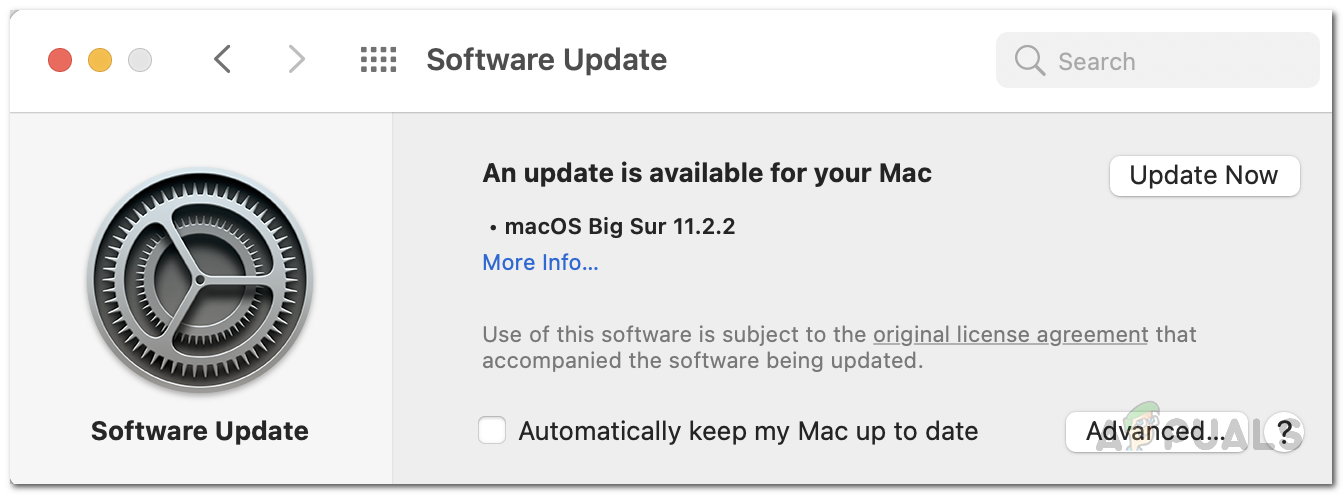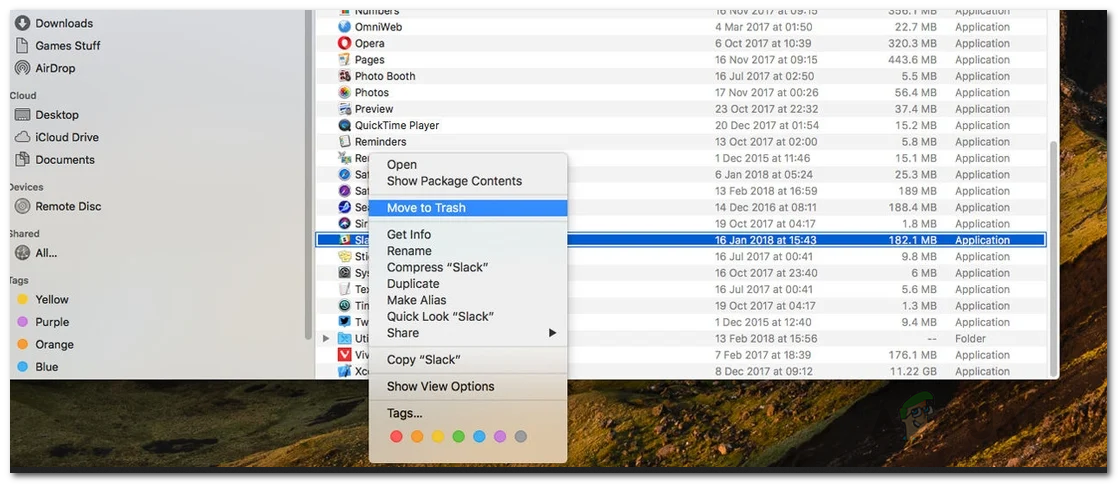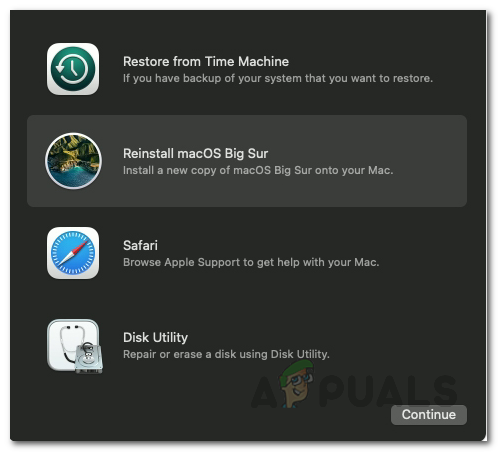Fix: “Your computer was restarted because of a problem” on Mac?
When you are using a Mac system, you might come across the “Your computer was restarted because of a problem” error message. This can happen again and again which turns out to be really frustrating. This is basically known as Kernel Panic on Mac. Normally, a computer can restart due to multiple reasons depending on different scenarios. In some cases, you initiate a restart which would be normal behavior or a software install can require a reboot before you are able to use it. Both of these are common and completely normal scenarios. However, what is not normal is when your Mac restarts without any reason at all, or at least a reason that is known to you. When the system boots up again or, you will be shown the error message.

As it turns out, the reason that you are facing the error message is due to kernel panic occurring on your system. Now, even though the name sounds scary, kernel panic is basically a Mac version of the infamous Windows blue screen of death errors like the Memory_management error. This essentially happens when your macOS encounters a problem that it cannot handle due to which the computer is forced to restart automatically. If this happens rarely, then it is not much of a problem. However, when it starts happening on a regular basis is when it is to be taken seriously.
Now, there are multiple reasons why you might face a kernel panic. As it turns out, a kernel panic can be caused by issues with your system files. This means that if your system files are damaged or corrupted, you will be seeing a lot of kernel panics. In addition to this, there are other factors that can also contribute to the issue in question. So, before we get into showing you the different ways of solving the problem, let us first discuss why this actually occurs so that we can isolate the source of the problem. With that said, let us jump into it.
- External Peripherals — The first reason that you might be encountering a kernel panic could be due to the external peripherals that are connected to your Mac. In such a scenario, you will have to simply disconnect all of the connected peripherals from your Mac and then see if the problem is still there.
- Outdated MacOS — Another reason for your system restarting again and again could be an outdated macOS running on your system. This especially happens when you are using the latest apps on an older macOS version which can often cause compatibility issues. In such a case, you will have to update your macOS and make sure that you are running the latest version available to you.
- Corrupted System Files — As it turns out, corrupted system files can also cause your system to restart again and again automatically. It is pretty obvious that when your system files are damaged, you are bound to come across various issues while using your macOS machine. In such a case, you will have to simply repair your disk via the Disk Utility app.
- Third-Party Software — All of us use third-party applications on our systems. In some cases, a third-party software can cause an issue due to which your Mac is forced to restart. If this case is applicable, you will have to get rid of the software that you have recently installed to resolve the issue.
- Display Scaling — Finally, as it turns out, the problem could also be due to the display scaling settings of your Mac in some cases. This especially happens when you are using a custom display scaling instead of default. In such a scenario, you will have to revert to the default setting to resolve the problem.
Now that we have gone through the potential causes of the problem in question, we can get into showing you the various ways of fixing the error message mentioned without any issues. With that said, let us get started without any further delay.
Change Display Scaling (if applicable)
As it turns out, the first thing that you should do when you are facing the mentioned error message continuously is to make sure that you are running the default display scaling on your Mac. MacOS lets you have a custom display scaling should you choose to. However, in some rare cases, this can cause an issue with your Mac which is why it is restarting automatically. This can be easily changed via the System Preferences. To do this, follow the instructions given down below:
- First of all, on your Mac, click the Apple icon and then from the drop-down menu, choose System Preferences.

Opening System Preferences - Once the system preferences window is open, click on the Display option.

System Preferences Window - There, on the Display tab, choose the Default for display option. If it was already on the default option, you will have to scale it per your display’s resolution.

Resetting Display Settings to Defaults - To do this, press the Option key on your keyboard and then click the Scaled option. This will bring up a drop-down menu from where you can choose your display resolution.

Choosing Custom Display Resolution - Once you have done, keep using your Mac to see if the problem persists.
Remove External Peripherals
As we have mentioned above, one of the reasons that you are encountering the error message in question could be due to the peripherals that are connected to your Mac. This includes any hard drives, printers and more. In order to do this, you will have to first turn off your Mac and then remove the devices from your machine. In case you are using a desktop Mac, you don’t need to remove your keyboard, mouse and the display. After doing that, go ahead and open up your Mac and use it for a while to see if the problem occurs again.

In case the problem doesn’t appear, you can turn off your Mac again and try to connect the devices that you removed earlier one at a time. This will help you in figuring out what device is actually causing the problem to occur. In case the issue is still there, move on to the next solution down below.
Update MacOS
Running an outdated version of any application is never really recommended and especially when it comes down to your operating system. System updates are really important for your device as they contain security patches and plenty of bug fixes. In addition to that, if you are running newer applications on an outdated version of macOS, there are chances that it can cause some compatibility issues. In such a scenario, you will have to make sure that your macOS is up to date. To do this, follow the instructions given down below:
- First of all, you will have to open up the System Preferences window. To do this, click on the Apple icon in the top left corner and then choose System Preferences from the drop-down menu.

Opening System Preferences - Once the System Preferences window is open, click on the Software Update option.

System Preferences Window - There, Mac will automatically search for any updates available. If updates are found, you will be able to see a Update Now button.

Updating MacOS - In case you don’t find any updates, click on the Advanced button at the bottom right corner.
- There, make sure everything is ticked and then click the OK button.

Software Update Advanced Options - Wait for the updates to be installed and it may even require you to restart your PC.
- Once you are done with that, use your Mac to see if the problem is still there.
Reset NVRAM
As it turns out, NVRAM or Non-volatile Random Access Memory is basically a small amount of memory on your Mac that is used to store specific settings for the purpose of accessing them quickly later on. The different settings that are often stored in NVRAM are display resolution, startup disk selection, kernel panic information and much more. Resetting NVRAM can help fix several issues on your Mac, especially a kernel panic. To reset NVRAM on your Mac, follow the instructions that are given down below:
- First of all, make sure that your Mac is powered off.
- Then, go ahead and power it on and immediately press the Option + Command + P + R keys on your

Pressing Command + Option + P + R to Reset NVRAM keyboard. Hold down the keys for around 20 seconds and then release them.
- If your Mac plays a startup sound, you can release the keys after the second startup sound.
- In case you have a Mac that is running the Apple T2 Security Chip, you will have to release the keys after you see the Apple logo disappear for the second time on your screen.
- Then, once you have done that and your Mac boots up, use it and see if the problem occurs again.
Uninstall Recently Installed Software
Third-party software is used by every one of us for the sake of our day to day tasks. In some scenarios, if you are running an outdated software, it can cause some issues with your Mac machine that might force it to restart automatically. This can often be due to compatibility issues. In such a scenario, you will have to update the apps on your system to see if that fixes the problem.
In case all the applications are running on the latest version available, then it is possible that an application is malfunctioning and causing a kernel panic. If this case is applicable, you will have to uninstall the third-party software that you have installed prior to the appearance of the error message and then see if the problem is solved. Follow the instructions given down below to uninstall an app on a Mac:
- To uninstall an app from Mac, simply go ahead and open up the Applications directory in Finder. Alternatively, you can click on the Go drop-down menu on the top bar and then choose Applications from there.

Going to the Applications directory in Finder - There, CTRL + Click the application and then from the drop-down menu, choose the Move to Trash option.

Removing Application on Mac - See if that fixes the problem.
Repair Disk Errors and Permissions
In case the problem is still there, then it is likely that your disk is either damaged or the permissions are incorrect. This is never a good sign because it can include damaged system files which can cause several critical issues on your device. However, luckily, there is an easy way to repair your system files on your Mac. This can be done via the Disk Utility that comes on your macOS for the very same reason. Disk Utility can be used for a lot of reasons but one of the major features is that it allows you to scan your disk for any errors and then repair them via the First Aid utility. To do this, follow the instructions given down below:
- First of all, click on the Apple logo at the top left corner and then choose Restart from the drop-down menu.

Restarting Mac - As your Mac restarts, immediately hold down the Command + R keys on your keyboard until you see the Apple logo on the screen.

Pressing Command + R - This will eventually take you to the macOS Utilities window.
- There, from the list, choose Disk Utility and then click the Continue button.

Opening Disk Utility from macOS Utilities - Once the Disk Utility window is up, select your hard drive on the left-hand side and then click the First Aid option at the top of the window.

Running First Aid - Click the Run button on the pop up that appears.
- Wait for the repair to complete. Once it has finished, you can restart your system and login to your account.
- Then, use your Mac for a while and see if the problem still appears.
Reinstall MacOS
If your problem hasn’t gone away after trying all of the solutions mentioned above, then you will have to completely wipe out everything on your device and perform a reinstall. In such a scenario, we recommend to first create a backup of all the important files on your Mac before performing a reinstall. MacOS can be easily reinstalled via the macOS Utilities window that we used above to repair the hard drive. To reinstall MacOS on your computer, follow the instructions given down below:
- First of all, you will have to start up your Mac in recovery mode.
- To do this on a Mac with Apple silicon, go ahead and power off your device first. Then, press and hold down the power button until you see the Loading startup options message on the screen.

Mac Power Button - Then, click on the Options icon and click Continue.
- If you are on an Intel-based Mac, the procedure is a bit different. First of all, go ahead and restart your Mac.

Restarting Mac - As your device restarts, quickly hold one of the two combinations mentioned below depending on what you want to do.
- Press and hold the Option + Command + R keys if you wish to install the latest version of macOS on your computer.

Pressing Option + Command + R - Or, press and hold the Shift + Option + Command + R keys if you wish to reinstall your computer’s original version of macOS on your computer.

Pressing Shift + Option + Command + R - Once you have done that, the procedure is the same from here onwards.
- On the Recovery app window, go ahead and select the Reinstall macOS or Install macOS option and then click the Continue button.

Choosing Reinstall MacOS Option - After that, follow the on-screen prompts to complete the installation configuration. Once your macOS has reinstalled, use it for a while to make sure that the error message is no longer there.





